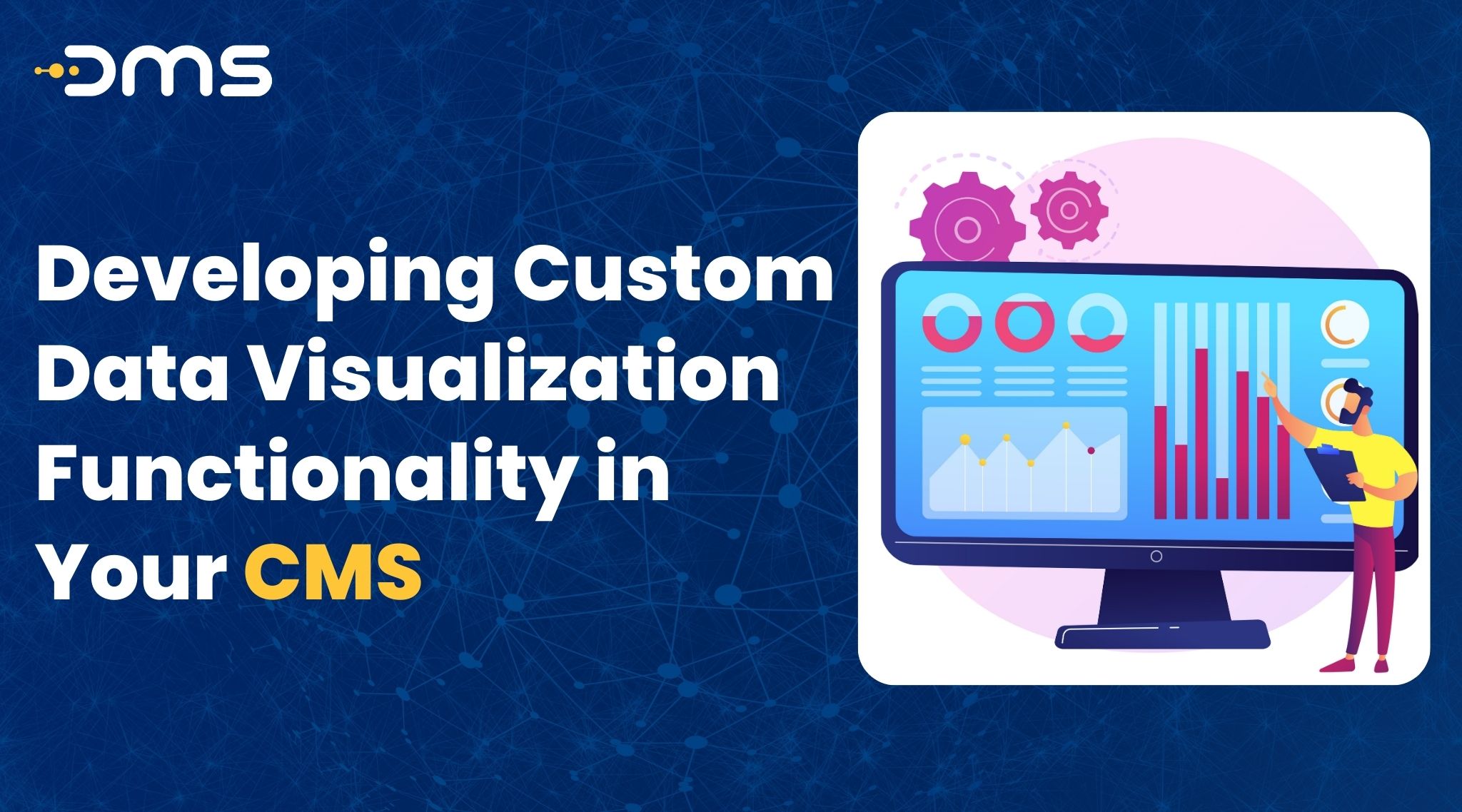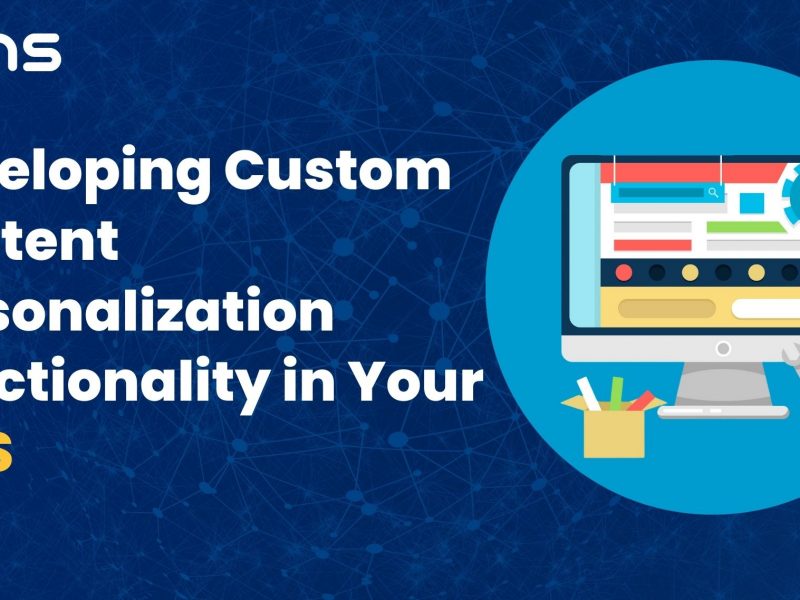Data is the primary source of corporate decisions and user engagement in the information age. Whether you’re managing an e-commerce platform, an online presence with a lot of content, or analyzing user behaviour on a blog, developing custom data visualization functionality is essential for assisting you in making sense of the enormous amount of information accessible. Digital information is typically maintained by web-based content management systems (CMS), and the addition of specialized tools for data visualization can revolutionize user experiences and help data-driven decision-making.
The Power of Data Visualization:
The visual display of data and information is known as the visualisation of data. Complex datasets are transformed into straightforward, concise, and visually appealing charts, graphs, and diagrams. Data visualisation takes advantage of the fact that the human brain is innately better at digesting visual information to communicate insights that could be buried in a sea of numbers.
CMS platforms have been created to satisfy an array of user needs by providing a number of capabilities out of the box. However, when it comes to displaying specific data relevant to your business or industry, customizing data visualization becomes essential.
Why Customize Data Visualization in Your CMS?
Tailored Insights:
Every business has unique data requirements. One can show data that are unique to your industry, customer base, and business objectives by using custom data visualisation. Whether it’s sales trends, user behaviour, or content performance, custom visuals can reveal insights that off-the-shelf solutions might not capture.
Improved User Engagement:
Visual appeal plays a crucial role in user engagement. By offering exciting and visually appealing graphical representations, custom data visualisation improves the user experience and lengthens users’ stays on your website or platform.
Data-Driven Decision Making:
Data-driven decision-making is a prerequisite for growth in the digital age. Employing unique data visualisation, you can right away analyse patterns, trends, and anomalies, which will help you make decisions that will help your organisation grow.
Competitive Advantage:
In a competitive market, unique features can set your CMS apart. Custom data visualization can be a powerful differentiator, attracting users and businesses seeking comprehensive insights.
Steps to Develop Custom Data Visualization Functionality:
Planning and carrying out the development of customised data visualisation capability in your CMS meticulously is necessary. Here’s a step-by-step guide to help you achieve it:
Define Your Objectives:
Clearly outline the objectives you want to achieve with custom data visualization. Decide which data categories to visualise and what critical insights you wish to derive. Understanding your goals will help you determine the right visualization tools and methods.
Choose the Right Visualization Tools:
A wide range of tools and libraries for data visualisation are accessible, each serving a different purpose. You can select from libraries like D3.js, Chart.js, Highcharts, or Google Charts depending on the complexity of your data and the level of customization necessary. Evaluate their features, compatibility with your CMS, and ease of integration before making a choice.
Integrate Data Sources:
You’re going to need access to important data sources in order to produce meaningful visualisations. Integrate information from a variety of sources, including your CMS database, external analytics platforms, and API endpoints. Data integration might require custom development, ensuring that the right data is available for visualization.
Design the Visuals:
Visual design is crucial in custom data visualization. Consider your brand’s aesthetics and user preferences while designing the charts and graphs. Pick layouts, colours, and fonts that go with the overall design of your website. To avoid overwhelming people, make the images straightforward, understandable, and uncluttered.
Implement Interactivity:
Static charts have their place, but interactive visualizations can significantly enhance user engagement. Implement features like tooltips, drill-down functionality, filtering, and animations to make the visualization experience more immersive and informative.
Optimise for Performance:
Data visualisation can be resource-intensive, affecting your website’s performance. Optimize your custom visualizations for speed and responsiveness to ensure smooth user experiences. Techniques like lazy loading and caching can help minimize load times.
Test Thoroughly:
Before developing custom data visualization functionality on your live CMS, conduct comprehensive testing. Check for cross-browser compatibility, responsiveness on different devices, and data accuracy. User feedback during the testing phase can provide valuable insights for further improvement.
Monitor and Iterate:
Data visualization is not a one-time job. Monitor the usage of your custom visualizations and collect user feedback. Regularly update and iterate on the visualizations based on changing business needs and user preferences.
Examples of Custom Data Visualization:
E-commerce Sales Trends: An e-commerce CMS might implement custom line charts and heat maps to visualize sales trends over time and identify peak buying periods.
Content Performance Dashboard: A content-heavy website CMS could develop a custom dashboard with bar graphs and pie charts to display content engagement metrics like page views, bounce rates, and popular articles.
Real-time User Analytics: Custom data visualization could enable a real-time analytics dashboard in a CMS, visualizing user behaviour, active users, and geographical distribution.
Financial Data Analysis: A finance-related CMS might integrate custom candlestick charts and scatter plots to analyze stock market trends and visualize portfolio performance.
Conclusion:
Features can completely change the way you show and analyse data by developing custom data visualization functionality, which will ultimately result in better business choices and better user experiences. In today’s information-driven world, by defining your objectives, choosing the right tools, and optimising for performance, one may fully realise the potential of their information and gain a competitive advantage. Don’t forget that data visualisation is about conveying an engaging story to your audience that motivates actionable results rather than just displaying data as statistics. So start your customised data visualisation journey & watch your content management system succeed to new heights.


